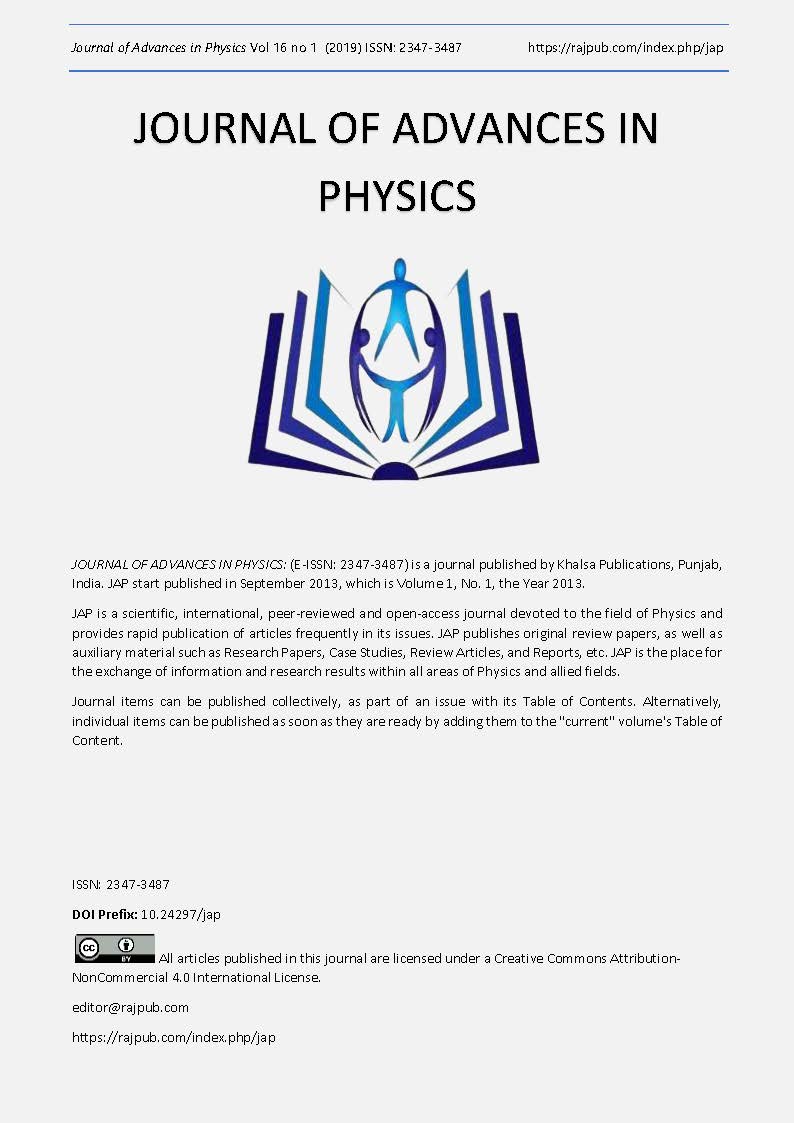Study The Influence of The Number of Beams on Radiotherapy Plans for The Hyopfractionated Treatment of Breast Cancer Using Biological Model
DOI:
https://doi.org/10.24297/jap.v16i1.8460Keywords:
Breast Cancer, Number of Beams, TCP: Tumor Control Probability, NTCP: Normal Tissue Complication Probability, EUD: Equivalent Uniform Dose, HFRT: Hypofractionated Radiotherapy, And MATLAP ProgramAbstract
Purpose: To evaluate the biologic differences in treatment plans with different number of beams on 3D conformal radiotherapy for breast cancer patients, and compute the percent of probability to tumor control and complication of normal tissue probability using matlap program. Then determine the optimum plan through these values.
Downloads
References
Amr AG and Rasha A K, (2016), “An accelerated hypofractionated schedule with a concomitant daily boost after breast conservation surgery: the feasibility and toxicity.” Journal of the Egyptian National Cancer Institute; 28: [39–44].
Tobias JS (1996). “The role of radiotherapy in the management of cancer--an overview” Ann Acad Med Singapore.; 25: [371-379].
National Institute of Health Consensus Development Conference Statement (2001) “Adjuvant Therapy for Breast Cancer”. J Natl Cancer Inst.; 93: [979-989].
American Cancer Society. Radiation Therapy. Available at:http://www.cancer.org/docroot/CRI/content/CRI
Ahmed H. Oraby, Ibrahim A. Awad, Ehab M. Attalla, and Alia A. Azzam (2017)” Study the Influence of
Treatment Interruptions in the Radical Irradiation of Breast Cancer journal of advances in physics; 13 ( 5): [2 3 4 7 - 3 4 8 7].
Zaider M, Minerbo GN (2000) “Tumour control probability: a formulation applicable to any temporal protocol of dose delivery”.journal of Phys Med Biol; 45:[279-93].
Bentzen SM, Tucker SL (1997) “Quantifying the position and steepness of radiation dose-response curves”. Int J Radiat Biol; 71: [531-42].
Tucker SL, Taylor JM” Improved models of tumour cure” (1996). Int J Radiat Biol; 70: [539-53].
Martel MK, Ten Haken RK, and Hazuka MB. (1999 )”Estimation of tumor control probability model parameters from 3-D dose distributions of non-small cell lung cancer patients. Lung Cancer; 24: [31-7].
Fenwick JD, Nahum AE, and Malik ZI (2009).” Escalation and intensification of radiotherapy for stage III non-small cell lung cancer: opportunities for treatment improvement”. Clin Oncol (R Coll Radiol); 21: [343-60].
Nahum AE, Sanchez-Nieto B.” Tumour control probability modeling (2001)” Basic principles and applications in treatment planning”.journal of Phys Med; 17: [13-23].
Allen Li X, Alber M and Deasy JO (2012) “The use and QA of biologically related models for treatment planning: a short report of the TG-166 of the therapy physics committee of the AAPM” journal of Med Phys; 39: [1386-409].
Christian P. Karger: Biological models in treatment planning. Chapter 18: [222:235].
prowess Inc. treatment planning systems. Prowess panther Tps user manual. Version 5.51 website:http://www,prowess.com: page 29
Oldham .M, Khoo V. S., Rowbottom C. G., Bedford J. L. and Webb S. (1998).,” A case study is comparing the relative benefit of optimizing beam weights, wedge angles, beam orientations and tomotherapy in stereotactic radiotherapy of the brain,’’ journal of Phys. Med. Biol ;43: [2123–2146] .
Vretenar M (2014) “CERN in the Proceedings of the CAS-CERN Accelerator School: Advanced Accelerator Physics” (CERN, Geneva, 2014) .http://dx.doi.org/10.5170/CERN-2014- 009. [295:329]
Astudillo-Velázquez AJ. (2014) “Aplicación de los modelos radiobiológicos, TCP y NTCP, al tratamiento hipofraccionado en radioterapia, Tesis de Maestría de la Universidad Autónoma del Estado de México. México”.
Niemierko A and Goiten M. (1991)” Calculation of normal tissue complications probabilityand dose-volume histogram reduction schemes for tissues with a critical element architecture” journal of Radiotherapy and Oncology; 20: [166-76].
Anil P, Kenji Myint W, Mahesh G, Sunyoung J, Jerilyn A. Logemann and Bharat B. Mittal (2010) “A computational tool for the efficient analysis of dose-volume histograms for radiation therapy treatment plans” Published in final edited form as: Journal of Appl Clin Med Phys.; 11[1]: 3013. PMC
Langer M., Morrill S.S, and Lane R., (1998). “A test of the claim that plan rankings are determined by relative complication and tumor-control probabilities”, Int. J. Radiat. Oncol. Biol. Phys; 41 (2): [451–7].
Moiseenko V, Battista J, and Van Dyk J(2000). “Normal tissue complication probabilities: Dependence on choice of biological model and dose-volume histogram reduction scheme”, Int. J. Radiat. Oncol. Biol. Phys; 46 (4): [983–93].
Niemierko A (1999). “A unified model of tissue response to radiation. In: Proceedings of the 41st AAPM annual meeting”, Nashville, Tennessee: Med Phys [1999:1100].
Niemierko A (1997) “Reporting and analyzing dose distributions: a concept of equivalent uniform dose” Med Phys; 24: [103-10].
Gay HA, Niemierko A. (2007) “A free program for calculating EUD-based NTCP and TCP in external beam radiotherapy.; Phys Med;23: [115-25].
Willner J, Baier K, Caragiani E, Tschammler A, Flentje M(2002) “Dose, volume, and tumor control predictions in primary radiotherapy of non-small-cell lung cancer”. Int J Radiat Oncol Biol Phys; 52: [382-89].
Guerrero M and Li XA (2003)” Analysis of a large number of clinical studies for breast cancer radiotherapy: estimation of radiobiological parameters for treatment planning”. Phys Med Biol; 48: [3307-26].
Hall EJ (2000) “Radiobiology for the radiologist”. 5th ed. LippincoQ Williams & Wilkins. USA.
Emami B, Lyman J, Brown A, Cola L, Goitein M and Munzenrider JE (1991) “Tolerance of normal tissue to therapeutic irradiation. Int J Radiat Oncol Biol Phys, 21: [109-122].
Jothy KS, Amit Bl, Subramani V (2008) “Normal tissue complication probability of fibrosis in radiotherapy of breast cancer: Accelerated partial breast irradiation vs conventional external-beam radiotherapy. J Cancer Res Therapy; 4 (3): [126-130].
Downloads
Published
How to Cite
Issue
Section
License
 All articles published in Journal of Advances in Linguistics are licensed under a Creative Commons Attribution 4.0 International License.
All articles published in Journal of Advances in Linguistics are licensed under a Creative Commons Attribution 4.0 International License.




